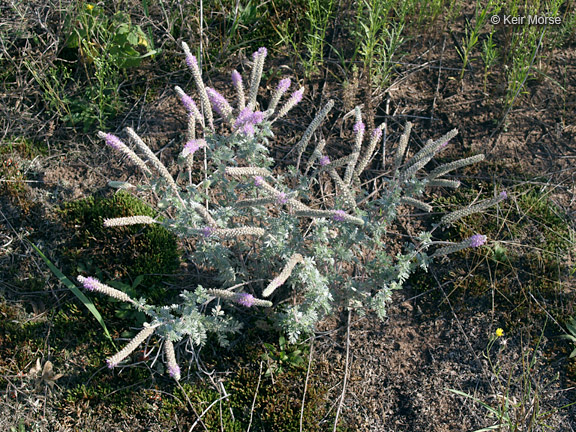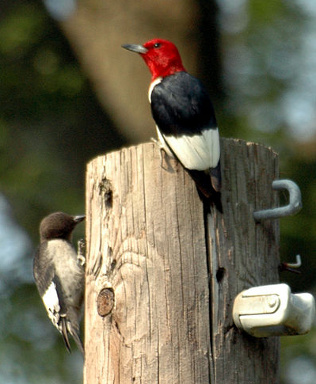The Manitoba Habitat Heritage Corporation (MHHC) has been working with private landowners in South-Western Manitoba over this past summer to cut down shrubs in native pastures. The MHHC is a wildlife habitat organization interested in the conservation and management of native mixed grass prairie in Manitoba. They have begun a 3 year program, available to landowners, that is aimed at … Read More
Shrub mowing to enhance grasslands for Species at Risk
Encroachment by wolf willow, snowberry and other woody shrubs, is a major threat to native mixed-grass prairie habitat. Without proper management, extensive patches can develop. A high density of shrub species negatively affects the health of prairie by competing with grasses for sunlight, nutrients and water. Shrubs also decrease the health of warm season grasses by shading the ground, resulting … Read More
Conserving Critical Grassland
When Earl Malyon was approached by Al Bourrier, Habitat Conservation Specialist with the Manitoba Habitat Heritage Corporation, to consider having a portion of his land preserved for wildlife habitat under a conservation agreement, he didn’t hesitate. “I was familiar with the program and the efforts to conserve habitat in the area,” Earl says. “So when Al approached me, I knew … Read More
Grosse Isle Restoration Project and Slideshow
[slideshow_deploy id=’1383′] The Manitoba Habitat Heritage Corporation (MHHC) has partnered with a team of conservation organizations and local landowners to restore what has almost been completely lost—native prairie. Currently less than 1% of the original Tall-grass Prairie stands remain in Manitoba, but, through the Prairie Habitat Revival Project, MHHC is undertaking the restoration of 223 acres (90 hectares) of habitat … Read More
Species At Risk Profile: Western Prairie Fringed Orchid
Common Name: Western Prairie Fringed Orchid Species Name: Platanthera praeclara Description: The Western prairie fringed orchid is an endangered wildflower that occurs only in Manitoba and seven American states. It grows perennially to a height of 16 to 35 inches. Flowers are arranged in a spike of four to 33 (most often less than 20) white to creamy white flowers. … Read More
Species At Risk Profile: Sprague’s Pipit
Common Name: Sprague’s Pipit Species Name: Anthus spragueii Description: The Sprague’s Pipit is a medium-sized, cryptically coloured songbird with a thin bill and distinctive tail pattern, with white outer feathers contrasting with brown inner feathers. Where it can be found: Throughout southwestern Manitoba on native prairie fields. Threats: Approximately 80% of all global breeding of this species occurs in Canada. … Read More
Save Our Skinks!
Manitoba’s Only Lizard Added to Endangered Species List Very little is actually known about the Northern Prairie Skink. Volunteer Devon Baete, on behalf of Manitoba Habitat Heritage, is looking to change that. For the past two summers Baete has been talking to and visiting landowners who have skinks on their property. With their permission, he sets “skink traps”- small pieces … Read More
Species At Risk Profile: Small White Lady’s Slipper
Common Name: Small White Lady’s Slipper Species Name: Cypripedium candidum Description: The Small White Lady’s Slipper is a herbaceous perennial orchid that can grow to a height of 10 to 35 cm (4 to 13 inches). Plants grow in clumps, with each flowering stem surrounded by two to four leaves. One flower is found at the tip of each flowering … Read More
Species At Risk Profile: Silky Prairie-Clover
Common Name: Hairy Prairie-Clover, Silky Prairie-Clover Species Name: Dalea villosa var. villosa Description: Hairy prairie-clover is a member of the Fabaceae, or Pea, Family. Their flowers are pale rose-purple or, rarely, white, and appear from mid-July to mid-August. Leaves and stems are densely covered with hairs, giving them a distinct velvety texture and silvery-green colour. The leaves are made up … Read More
Species At Risk Profile: Red-Headed Woodpecker
Common Name: Red-Headed Woodpecker Species Name: Melanerpes erythrocephalus Description: A vivid red head, neck and breast make the Red-headed Woodpecker easily recognizable. It is an omnivorous species, feeding on insects in the summer and nuts in the winter. Unlike other woodpeckers, the Red-headed Woodpecker forages for food rather than excavating holes to find insects. It is also the only woodpecker … Read More
- Page 1 of 2
- 1
- 2

